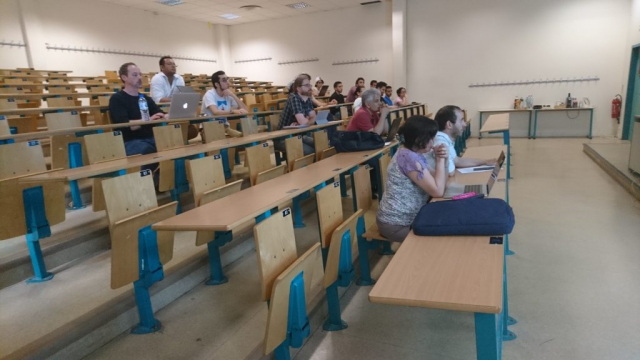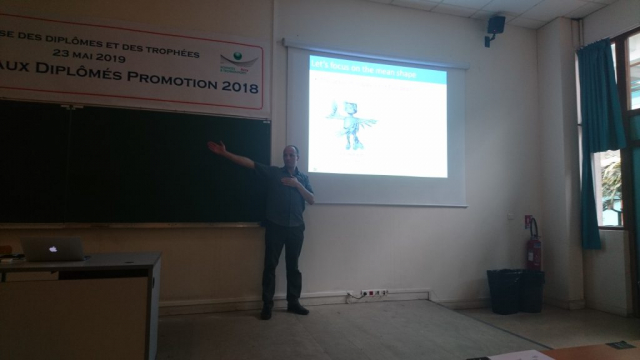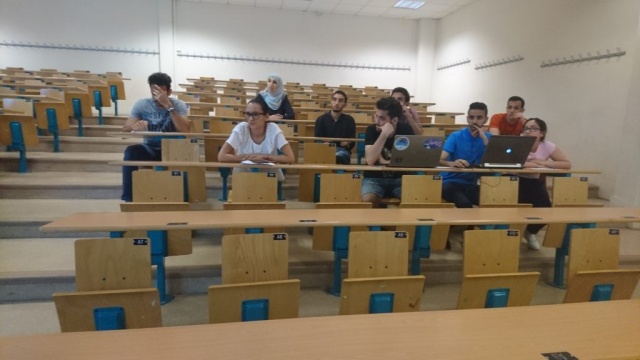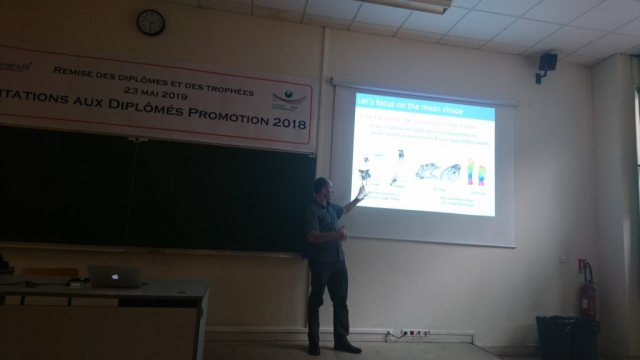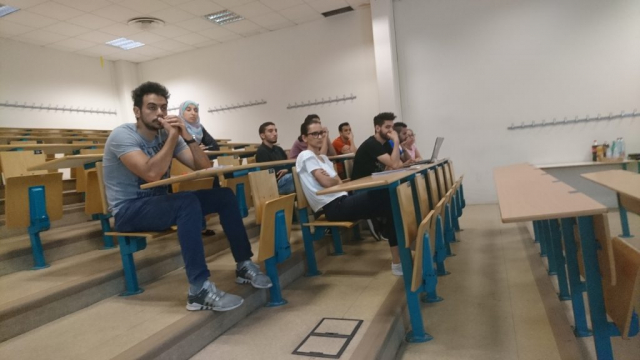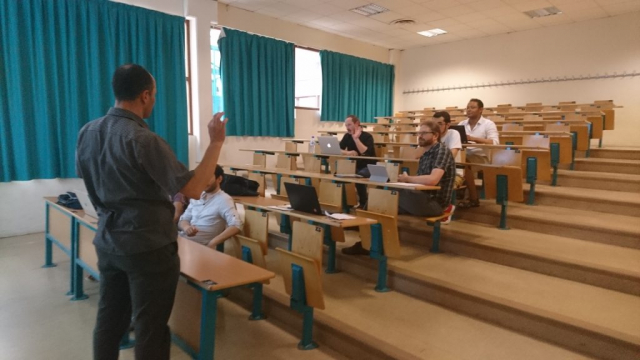Hamid Laga (Université Murdoch, Australie) fera un séminaire le mardi 25 juin 2019, 14h00 en Amphi Bx30, site Pelvoux.
Titre: Statistical Analysis of Tree-like 3D Shapes
Résumé:
Shape is an important phenotypic property of natural objects ranging from plants and trees, to
anatomical organs and human bodies. In particular, people are interested in quantifying the
(dis)similarities between the shape of objects, modelling how the shape of objects vary as the result of
(ab)normal growth, disease progression or interaction with the environment, and modelling and exploring
shape variability within and across populations of objects. There has been a lot of research in this area but
most of them focused on objects that deform only in geometry, i.e. objects that bend and stretch, ignoring
variability due to changes in topology and structure. While this covers quite a wide range of natural
objects, many objects in nature have complex structures that deform over time. Examples include plants,
trees and most of the delivery systems such as leaf veins and blood vessels in human body, and neuronal
structures in the brain.
In this talk, I will present our latest results on the statistical analysis of 3D shapes that have a tree-like
structure. I will particularly focus on botanical trees and plant roots, which we model as tree graphs with
nodes and edges augmented with some geometric properties. We then treat the tree shapes as elements
of a tree-shape space equipped with a proper metric that quantifies geometric and topological
deformations. Geodesics, or shortest paths under the metric, between two points in the tree-shape space
correspond to optimal deformations that align one tree onto another, including the possibility of
expanding, adding or removing branches and parts. Central to this framework is a mechanism for
computing correspondences between trees that have different structures and different number of
branches. The ability to compute geodesics and their lengths enables us to compute continuous blending
between botanical trees, which in turn facilitates statistical analysis such as the computation of averages
and modes of variations of tree structures. We show a variety of 3D tree and root models generated with
our approach from exemplars exhibiting complex geometric and topological differences. We also
demonstrate the application of the framework in reflection symmetry analysis and symmetrization of
botanical trees and discuss its application to growth analysis.
Brève biographie de Hamid Laga
Hamid Laga received his PhD degree in Computer Science in 2006 from Tokyo Institute of
Technology (Japan) in the area of 3D shape analysis and retrieval. He is currently an Associate Professor in
the college of Science, Health, Engineering and Education, Murdoch University. Prior to joining Murdoch
University, Hamid was a senior research fellow and deputy director at the Phenomics and Bioinformatics
Research Centre (PBRC) of the University of South Australia (Feb. 2012 – Jan 2016), Associate Professor at
the Institut Telecom in France (2010-2012), Assistant Professor at Tokyo Institute of Technology (2006-
2010), and a Fellow of the Japan Society for the Promotion of Science (JSPS) at Nara Institute of Science
and Technology, Japan (2006). His research interests span various fields of image processing, computer
vision and computer graphics focusing on image-based plant phenotyping, 3D modelling and statistical 3D
shape analysis. His contributions in these fields received the Best Paper Awards at: the International
Symposium on Geometry Processing (SGP) 2017, the APRS/IAPR Best Paper Prize at DICTA 2012, the Japan
Society of Art and Science Award 2008, the NICOGRAPH Paper Context (2007) and the IEEE International
Conference on Shape Modelling (SMI) 2006.
- Date: 25 juin 2019, 14h
- Lieu: IBISC, site Pelvoux, Amphi Bx30
- Orateur: Hamid LAGA, Universite Murdoch (Australie)
- Invitant: Hedi TABIA (futur PR Univ. Evry, IBISC), équipe IRA2
- Organisatrice: Naïma AIT-OUFROUKH-MAMMAR (MCF Univ. Evry, IBISC), équipe SIAM
- Fichier PDF du séminaire
- Présentation 1 au format PDF: « Statistical 3D Shape Analysis Using Square-‐Root Normal Fields »
- Présentation 2 au format PDF: « Statistical Shape Analysis of Tree-like 3D Objects »


